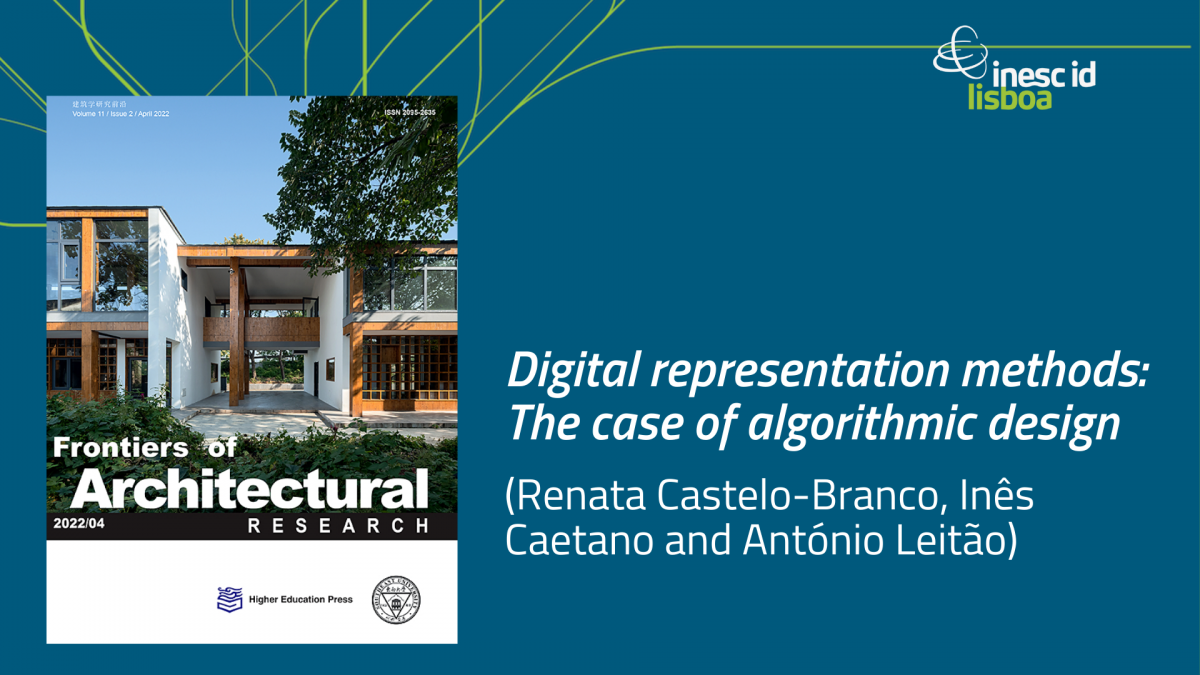
Picture a building: algorithmic design in architectural representation
What does a line of computer code have in common with a brick — or a wall, or a window? According to the latest computational techniques applied to architecture, a lot.
In her paper Digital representation methods: The case of algorithmic design (recently published in the journal Frontiers of Architectural Research with Inês Caetano and António Leitão), Renata Castelo-Branco — an early career researcher in the Graphics and Interaction Research Area — weighs the many ways in which algorithmic design (AD) is changing the day-to-day of architects. As a tool that breathes new air into what’s possible in describing and representing architectural entities — e.g., a building — AD follows a decades-long history of technological innovations in computer-based methods for architectural design: from computer-aided drafting (CAD) to building information modeling (BIM). AD applies algorithms — a finite set of rules and steps to solve a certain problem — to create a description of the object they want to materialize, with the added advantage that, due to its very nature, AD multiplies the possible number of solutions to a particular architectural question.
When asked what she considers as the most substantial impact of AD in architectural design, Renata reminds us that “Architecture, like many other art forms, frequently mirrors the technological advancements of its time, and computational design approaches, such as AD, reflect the increasing integration of computer science in the architectural domain,” adding that “As the article shows, AD excels in the production of complex designs, which has been motivating its use in large-scale and non-conventional design problems, such as the Morpheus Hotel in Macau or the Louvre in Abu Dhabi, to name some recent examples.”
Renata has a good hunch on where the field of AD will move and recognizes some of the hindrances what will have to be overcome, as she expects it to “evolve towards the use of context-specific tools that facilitate its adoption in architecture. Despite the numerous advantages, AD requires programming, a concept with which practitioners often struggle; more so when dealing with models of complex building structures. As a result, the adoption of computational methods has mostly been limited to large architectural studios that resort to expert hiring.” Computational literacy will play a big part in the wider adoption of AD, and here INESC-ID has a big part to play. As Renate concludes “For architecture to benefit from AD at large, we still need to close the existing comprehension gap between AD programs and their behavior, making this representation method more akin to the traditional architectural practice. Our team is currently investigating methods of bridging this gap with more adequate programming environments that can promote a flexible and comprehensible design exploration.”
Renata is one of the approximately one-hundred-and-fifty early stage researchers currently working at INESC-ID.
Investigating interactive computer graphics and human-centered computing applied to health, social inclusion, education, architecture, CAD and manufacturing, the Graphics and Interaction Research Area combines computer science, computer graphics, HCI, behavioral and social sciences to address real-world challenges. GI is one of the eleven Research Areas that make up the research tissue of INESC-ID. You can learn more about the INESC-ID Research Areas here.
